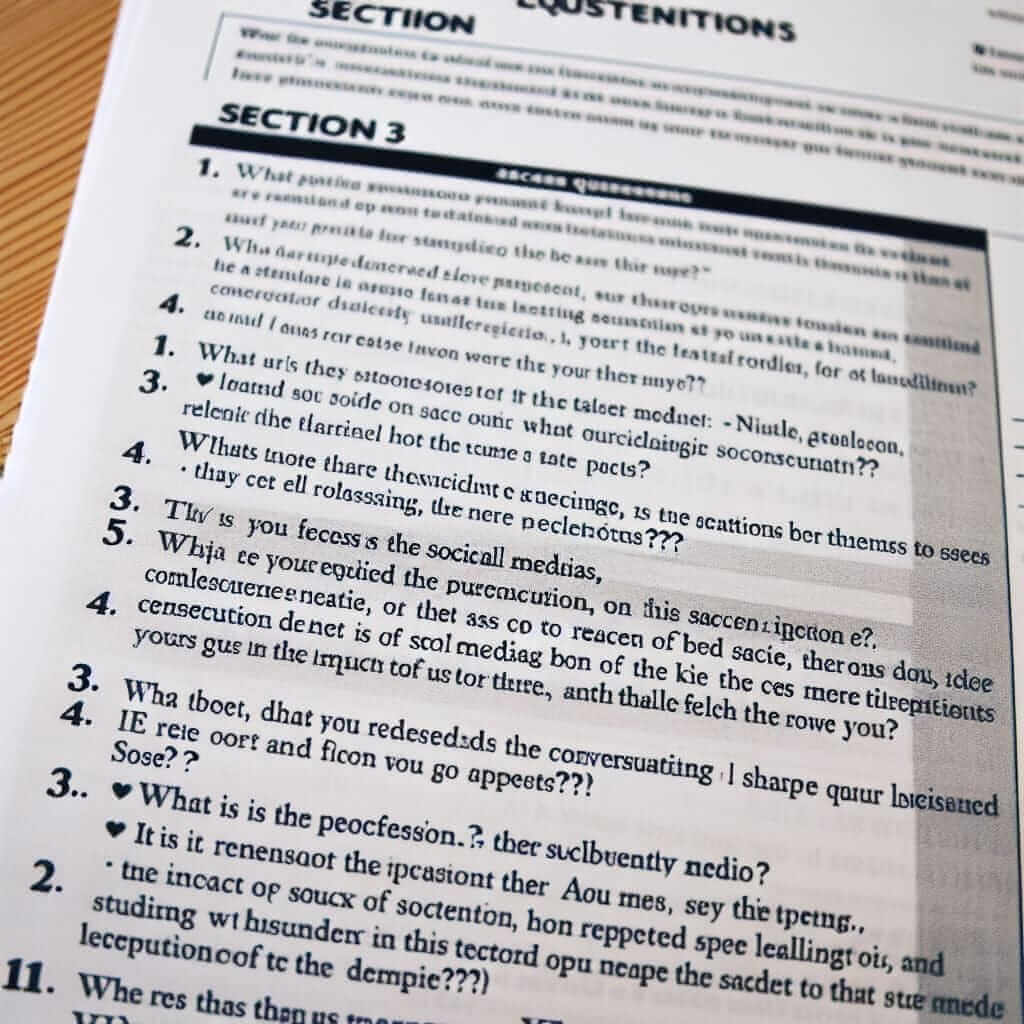The IELTS Listening test can be a challenge, and Section 3 often throws students a curveball. Why? Because it shifts from everyday social contexts to the academic world. Don’t worry! As an IELTS instructor with over two decades of experience, I’m here to equip you with the knowledge and techniques to conquer this section and boost your overall score.
Understanding IELTS Listening Section 3
This section features a conversation between two to four people, typically in an academic setting. Imagine a student discussion, a tutorial, or an interview with a professor. The topics are diverse, spanning subjects like education, technology, environment, and psychology, but they always maintain an academic tone.
What Makes Section 3 Tricky?
- Vocabulary: The vocabulary used is more academic. You’ll encounter subject-specific terms and formal language.
- Multiple Speakers: Keeping track of who’s saying what, and their opinions, can be demanding.
- Fast Pace: The conversation flows naturally, which means there are fewer pauses compared to other sections.
Mastering Section 3: Proven Strategies
-
Expand Your Academic Vocabulary:
- Read Widely: Explore academic articles, journals, and textbooks on various subjects.
- Note New Words: Keep a dedicated vocabulary notebook and jot down unfamiliar words along with their meanings and example sentences.
- Practice Using Them: Integrate these words into your own speaking and writing to solidify your grasp.
-
Sharpen Your Note-Taking Skills:
- Keywords are Key: Focus on capturing the most important words or phrases. Don’t try to write full sentences.
- Use Abbreviations & Symbols: Develop your own shorthand system for common words and ideas.
- Practice Active Listening: Train yourself to anticipate what might be said next based on the context.
-
Familiarize Yourself with Different Accents:
- Listen to a Variety of English: The speakers in Section 3 might have different accents. Explore podcasts, interviews, and documentaries featuring speakers from various English-speaking countries.

Example from an IELTS Listening Test
Let’s say the listening extract is about the impact of social media on student learning. You might encounter questions like:
- What are the two main advantages of social media mentioned by the professor?
- What is the male student’s concern about using social media for group projects?
- According to the female student, how can social media be a distraction?
Notice how the questions require you to understand the speakers’ opinions and the specific details of their discussion.
Top Tips for Success
- Use the Time Wisely: You get 30 seconds before each section to preview the questions. Use this time strategically to underline keywords and predict what you might hear.
- Don’t Get Stuck: If you miss an answer, don’t dwell on it. Move on to the next question. You’ll have time at the end to go back and make educated guesses if needed.
- Practice Regularly: Consistent practice is vital. Use official IELTS practice materials and simulate exam conditions to build your stamina and confidence.
Conclusion
Acing IELTS Listening Section 3 is achievable with focused preparation. By expanding your vocabulary, honing your listening skills, and implementing these strategies, you’ll be well on your way to achieving your desired IELTS score. Remember, practice makes perfect!